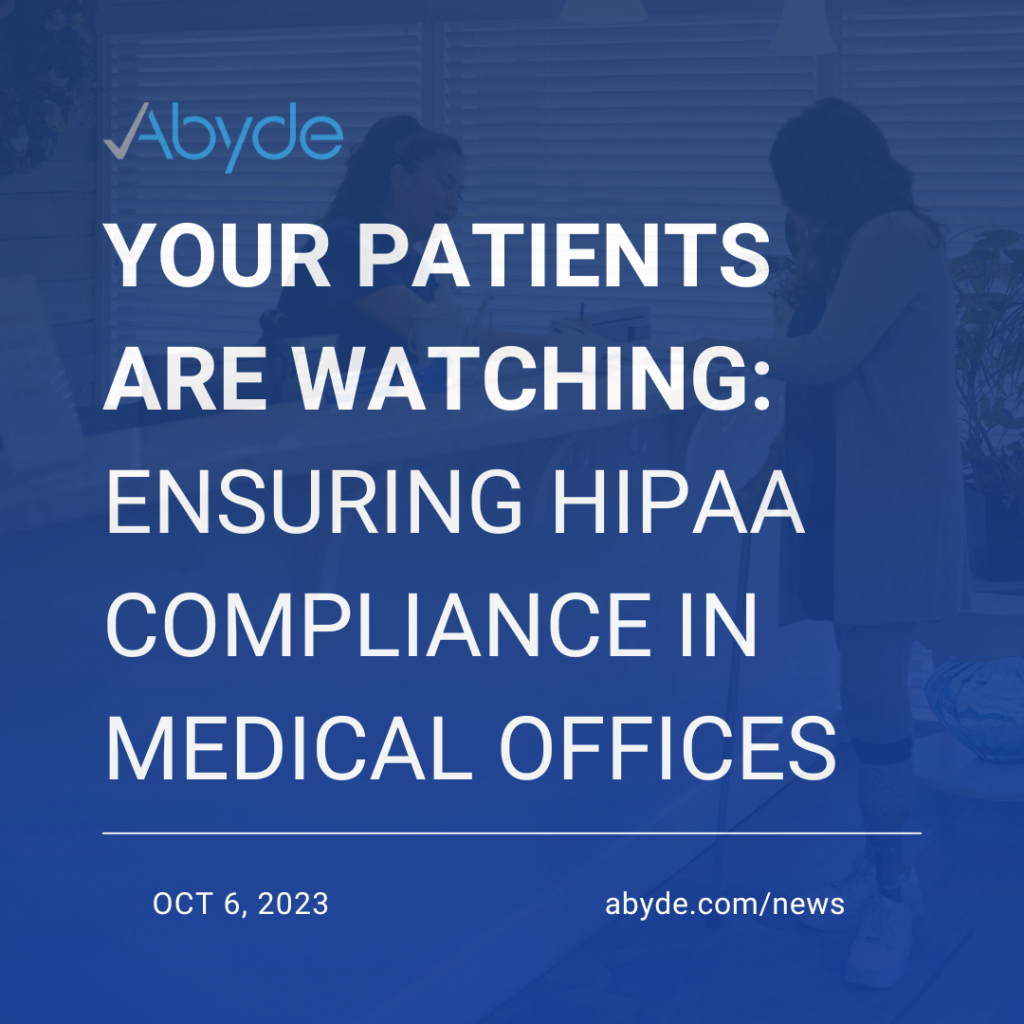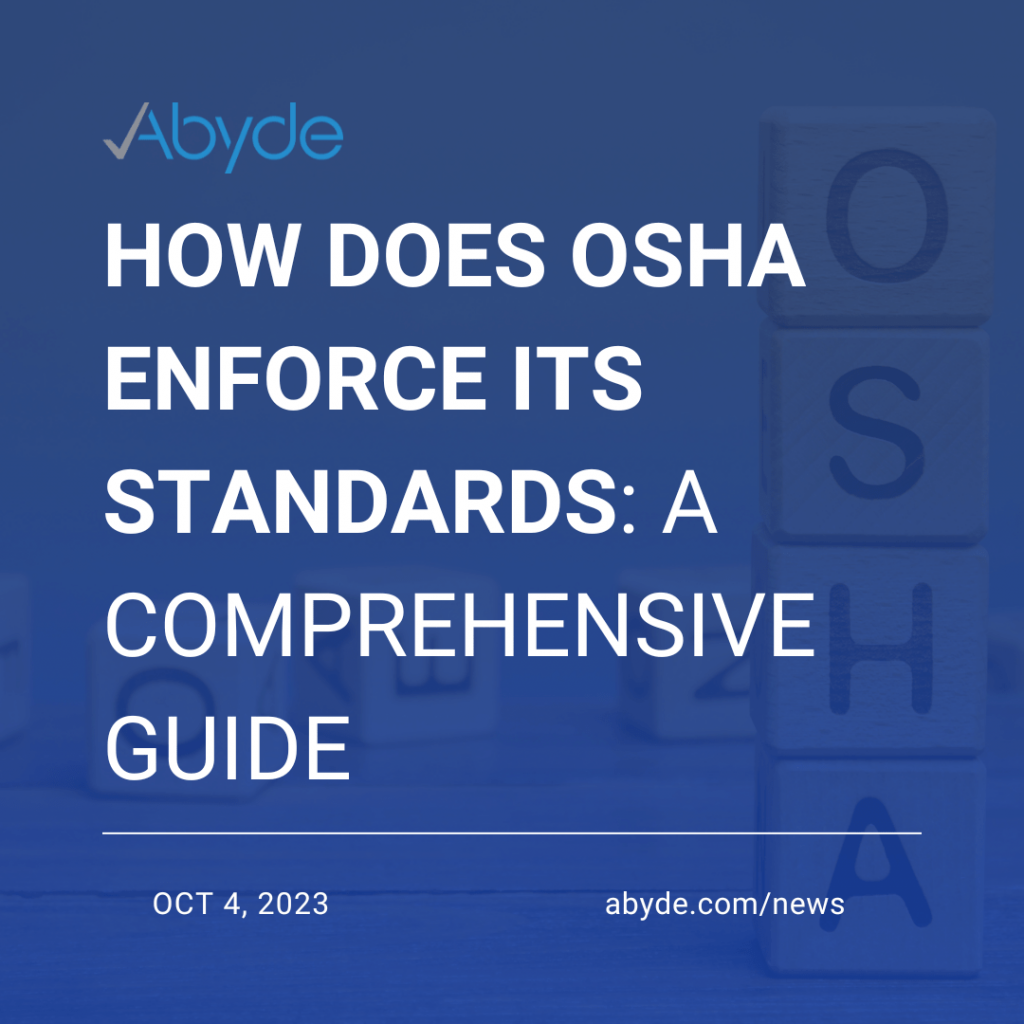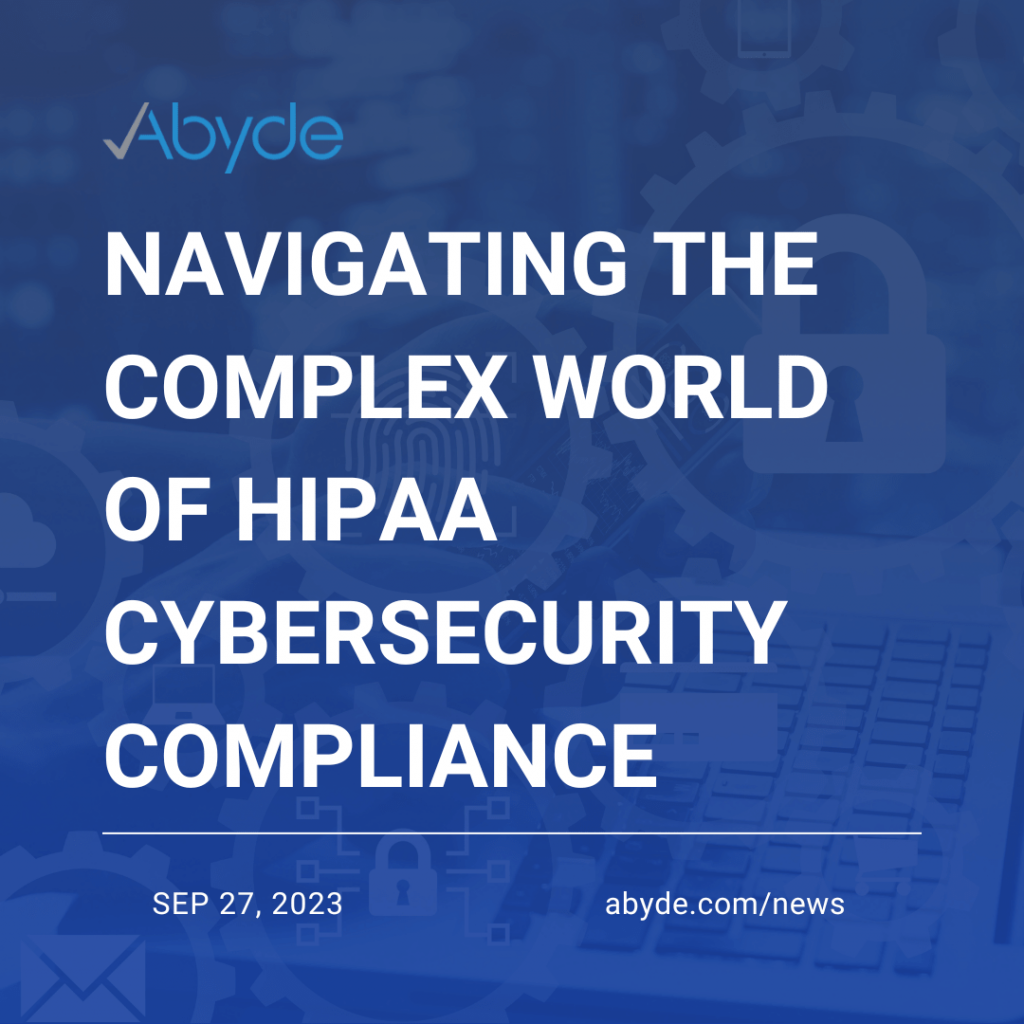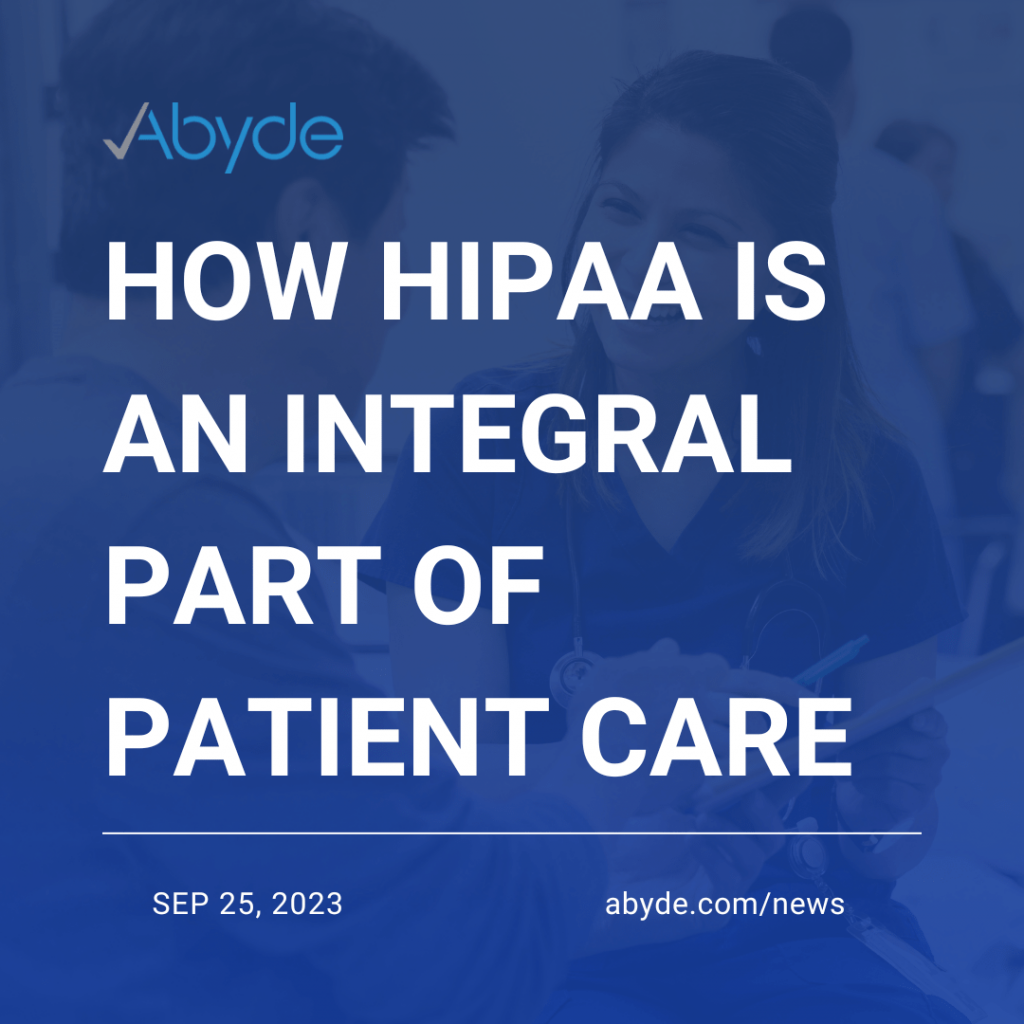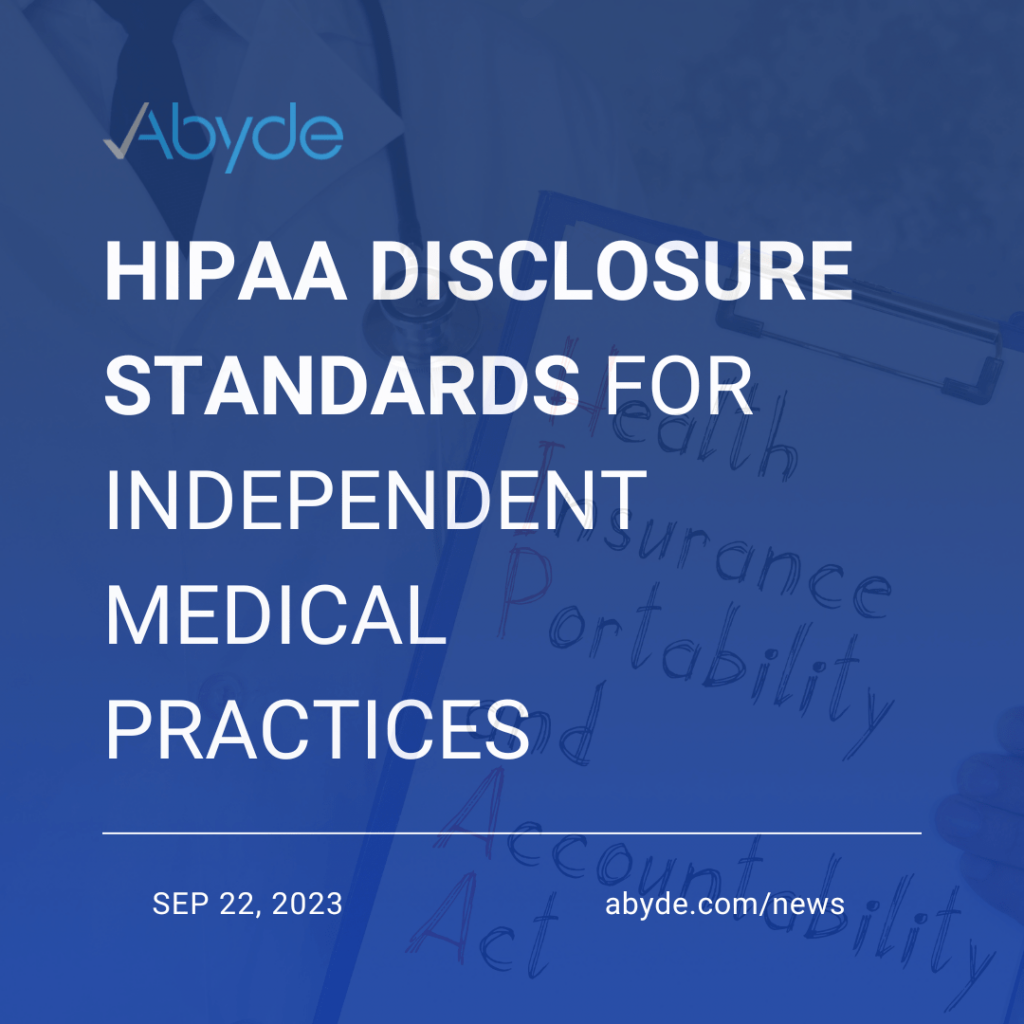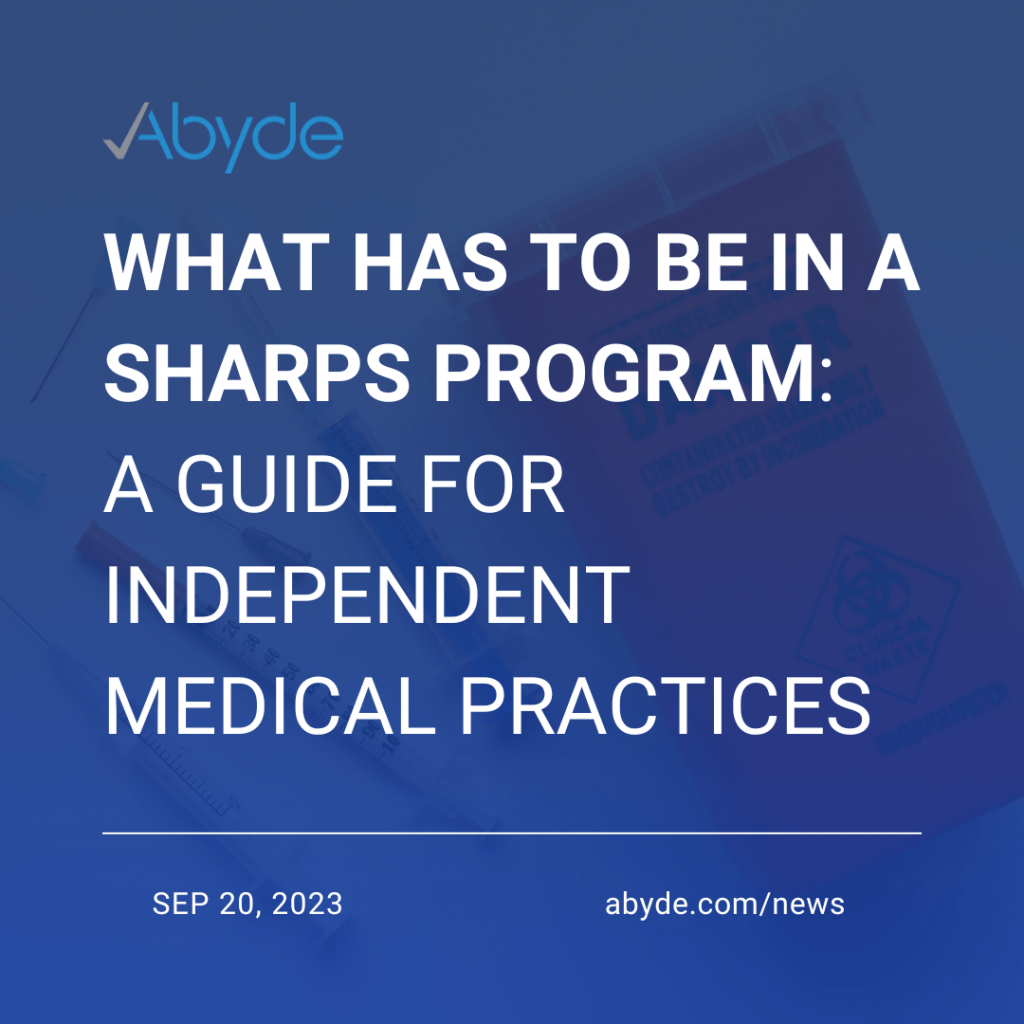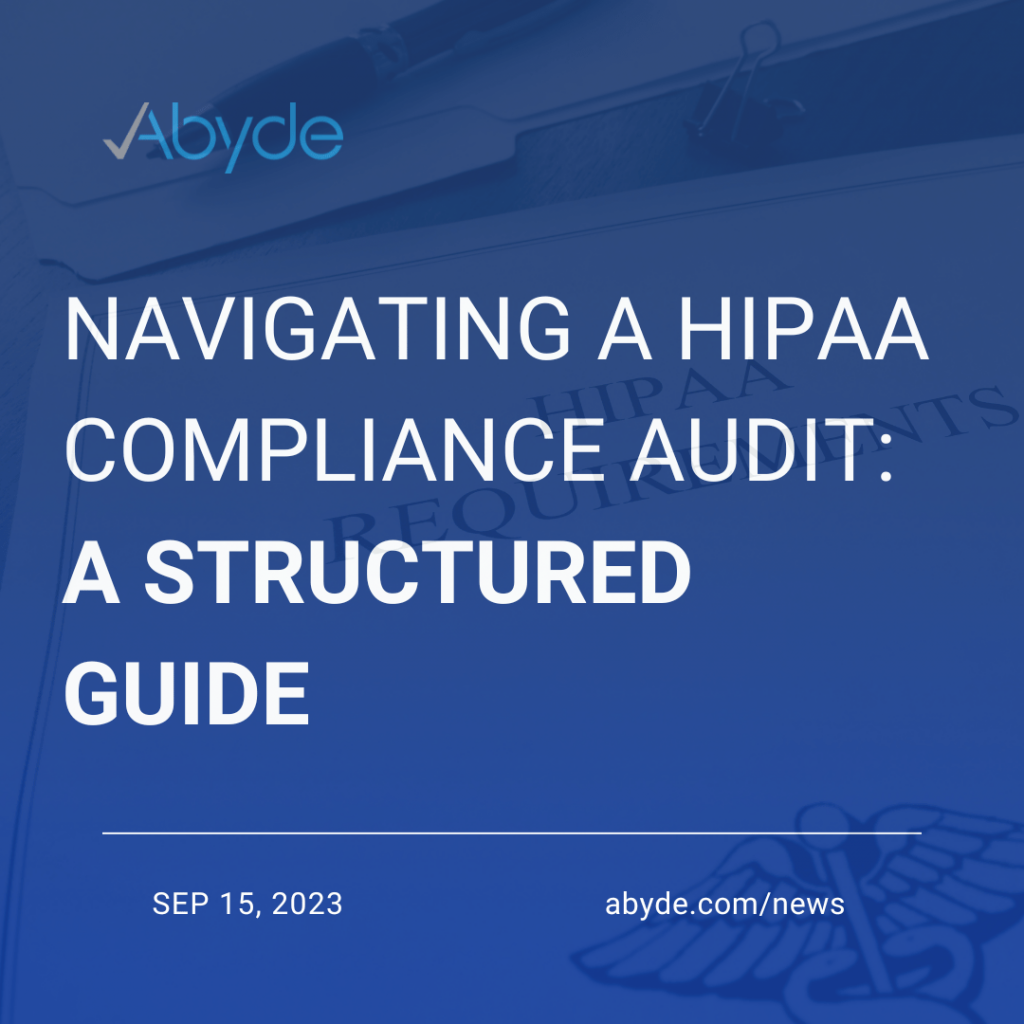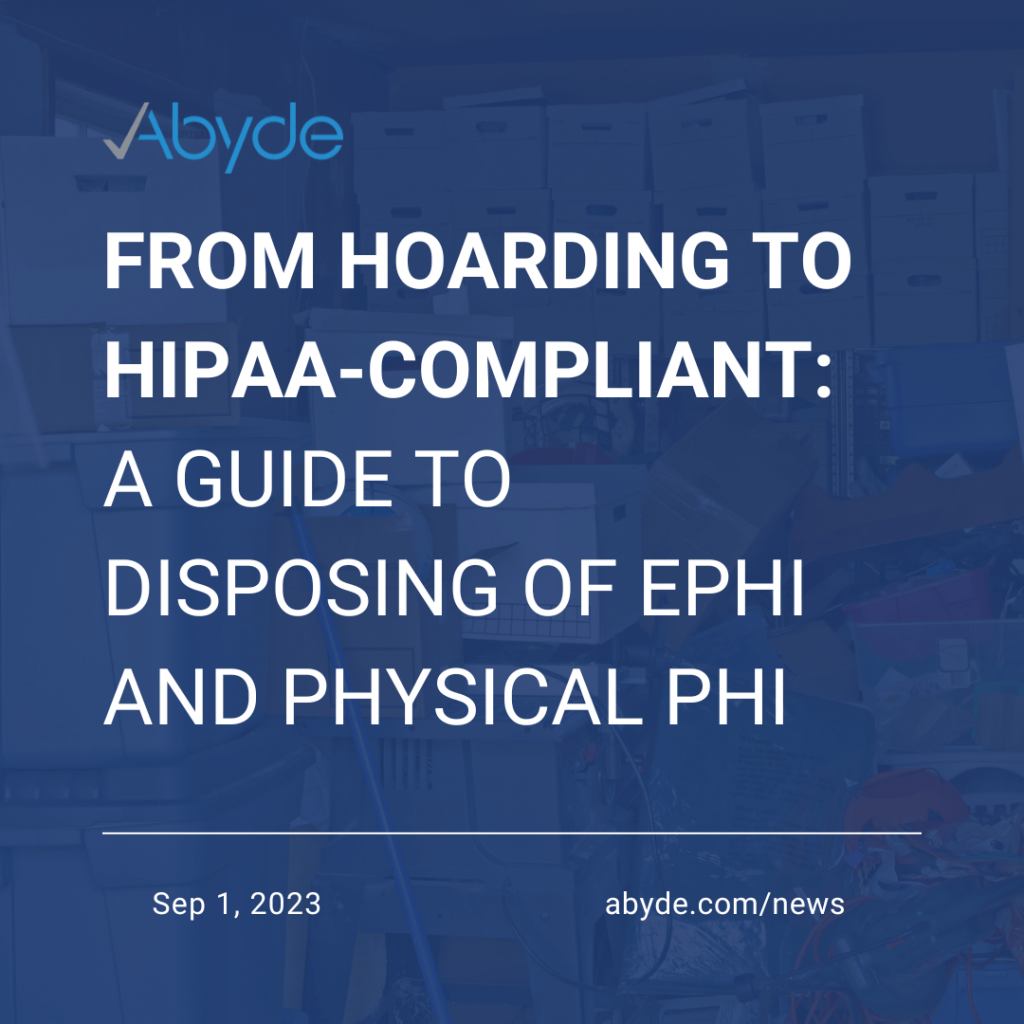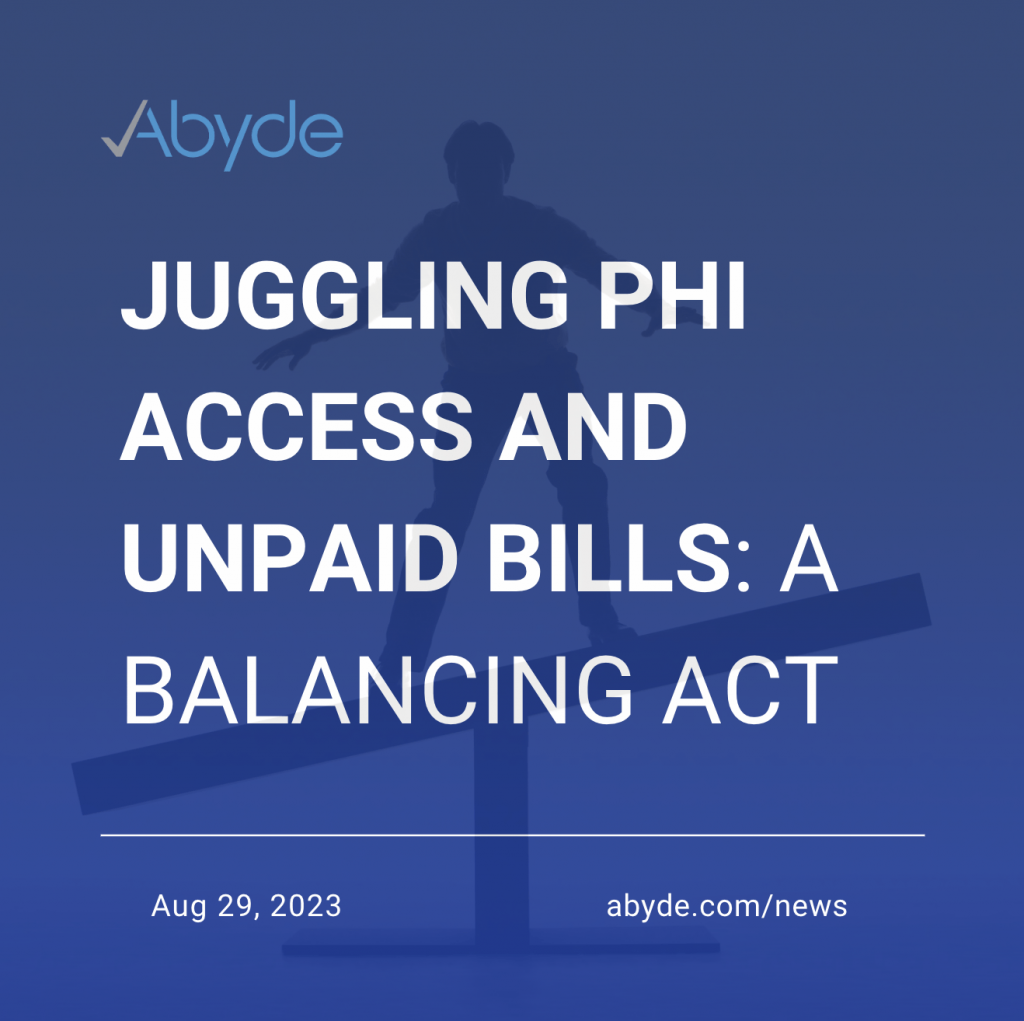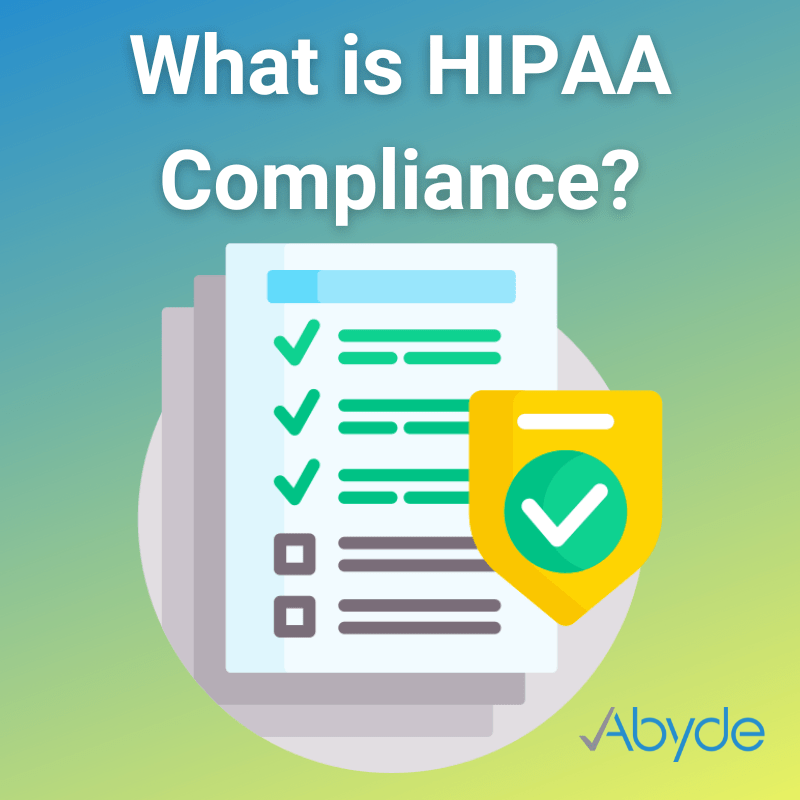October 6, 2023 The Health Insurance Portability and Accountability Act (HIPAA) is not just a set of guidelines that medical practices must follow to avoid fines and penalties; it’s a standard for patient care. Patients are well-informed about the importance of data privacy and security in an increasingly digital world. They are vigilant and observant, carefully watching how medical offices manage their confidential information. Hence, maintaining HIPAA compliance is a regulatory necessity and a way to gain patient trust and satisfaction. Below are some tips and tricks to ensure you stay HIPAA compliant when patients are watching. Signs Your Patients Are Monitoring HIPAA Compliance Tips and Tricks for Ensuring HIPAA Compliance Clear Communication with Patients Train Your Staff Physical Environment Tech-Savvy Measures Documentation Patient Feedback HIPAA compliance is a shared responsibility between healthcare providers and their staff. When your patients see you taking steps to protect their privacy and uphold the law, it builds trust, which is priceless in healthcare. Keeping an eye on these elements will help you stay compliant and make your patients feel secure and respected. How Abyde Can Help Risk Analysis Abyde provides a thorough Risk Analysis that helps identify potential vulnerabilities in your healthcare practice. The software can pinpoint where compliance might fall short and recommend specific actions to remedy these issues. Staff Training Abyde offers built-in staff training modules aimed at making your team HIPAA-savvy. Your staff must know the ins and outs of HIPAA, and training them with Abyde ensures you’re covering all your bases. Real-time Monitoring One of the critical features of Abyde is its real-time monitoring capabilities. It can automatically track activities that may be non-compliant and send alerts so that corrective action can be taken immediately. Documentation and Reporting Compliance is also about being able to prove that you’re compliant. Abyde’s robust reporting capabilities offer comprehensive documentation that can be invaluable during audits or legal scrutiny. Automated Audits Regular audits are a must, and Abyde offers automated solutions for this. It can conduct regular audits without human intervention, saving you time and effort while ensuring compliance is always up to par. Tailored Solutions Every healthcare practice is unique, and Abyde understands this. Its software solutions can be tailored to meet the specific needs of your practice, making compliance more manageable and effective. Additional Resources for HIPAA Compliance Staying HIPAA compliant is not just a legal obligation but a promise of trust and quality that you make to your patients. Abyde can facilitate this process, ensuring you maintain the highest data privacy and security standards. By adhering to HIPAA regulations effectively with Abyde, you not only avoid penalties but also win the trust and loyalty of your patients.
How Does OSHA Enforce Its Standards: A Comprehensive Guide by Abyde
October 4, 2023 Ensuring a safe and healthy workplace is a priority for employers across industries. The Occupational Safety and Health Administration (OSHA) plays a crucial role in setting and enforcing standards aimed at guaranteeing employee safety. But how does OSHA enforce these regulations? In this comprehensive guide, we break down the different mechanisms that OSHA employs to ensure compliance, including inspections, citations, and penalties. The Role of OSHA in Workplace Safety Established by the Occupational Safety and Health Act of 1970, OSHA is a federal agency responsible for maintaining health and safety regulations across workplaces in the United States. Its mission is to “assure safe and healthy working conditions for working men and women” (OSHA). Types of OSHA Inspections One of the primary ways that OSHA enforces its standards is through inspections, which can be categorized into various types: OSHA Citations and Penalties If a violation of OSHA standards is discovered, the agency issues citations that can carry hefty financial penalties. Fines can vary depending on the severity of the violation and can range from thousands to hundreds of thousands of dollars. Employers can contest these citations and may also be subjected to criminal charges in extreme cases (OSHA Penalties). OSHA’s Whistleblower Protections OSHA also enforces 22 federal whistleblower statutes to protect employees who report violations of various workplace safety regulations. This encourages employees to report unsafe conditions without fear of reprisal (OSHA Whistleblower Protection). How Abyde Can Help Ensuring OSHA compliance can be challenging, but you don’t have to do it alone. Abyde provides a comprehensive SaaS solution aimed at simplifying HIPAA and OSHA compliance for healthcare providers. Our platform helps you stay updated with the latest regulations, undergo training, and prepare for potential inspections, ensuring that you meet OSHA’s stringent standards. Conclusion OSHA plays a critical role in enforcing workplace safety standards across various industries. Through inspections, citations, and whistleblower protections, OSHA ensures that employers maintain a safe environment for their workforce. For more information about how Abyde can assist your healthcare organization in meeting OSHA and HIPAA compliance standards, contact us today. References Disclaimer: This article is for informational purposes only and does not serve as legal advice. By providing this guide, Abyde aims to simplify the complex landscape of OSHA enforcement mechanisms, helping healthcare providers focus on what they do best—caring for patients.
Navigating the Complex World of HIPAA Cybersecurity Compliance
September 27, 2023 Healthcare organizations handle a tremendous amount of sensitive data, from patient records to financial information. The Health Insurance Portability and Accountability Act (HIPAA) serves as the regulatory framework that outlines the need for stringent cybersecurity protocols to safeguard this data. Compliance with HIPAA isn’t just a legal obligation; it’s also a critical aspect of building trust with patients and stakeholders. This article will dive deep into the facets of HIPAA cybersecurity compliance, offering a comprehensive guide for healthcare organizations seeking to align with these standards. What is HIPAA? Enacted in 1996, the Health Insurance Portability and Accountability Act (HIPAA) aims to streamline healthcare transactions, reduce healthcare fraud and abuse, and ensure patient information remains confidential. Over time, HIPAA has evolved to address the modern complexities of digital healthcare data, most notably through the Privacy and Security Rules. HIPAA Security Rule The Security Rule outlines the guidelines that healthcare organizations must follow to ensure the confidentiality, integrity, and availability of electronic protected health information (ePHI). It is broken down into three main categories: Importance of Cybersecurity in HIPAA Compliance Cybersecurity in healthcare is not just about preventing unauthorized access; it’s about building a layered defense mechanism that addresses vulnerabilities across various entry points. Failing to comply can result in hefty fines, legal repercussions, and loss of reputation. Core Principles for Compliance Risk Analysis and Management HIPAA requires healthcare entities to conduct periodic risk analyses to identify potential vulnerabilities. Effective risk management plans should include a multi-layered security approach, such as the use of firewalls, antivirus programs, and encryption protocols. Abyde: Your HIPAA Compliance Partner Navigating the intricacies of HIPAA compliance can be daunting. That’s where Abyde comes in. As a leading HIPAA and OSHA Compliance SAAS Company, Abyde offers HIPAA-compliant software designed to simplify compliance, enabling healthcare organizations to focus on what they do best—providing quality care. With features like automated risk assessments, staff training modules, and continuous compliance monitoring, Abyde is the go-to solution for any organization seeking to secure its electronic healthcare data while adhering to regulatory standards. Employee Training Employees often serve as the first line of defense against cyberattacks. Organizations should provide regular training on recognizing phishing emails, using strong passwords, and securing mobile devices with ePHI access. Access Control Under HIPAA guidelines, only authorized individuals should have access to ePHI. This requires stringent access controls, including unique user identifications, emergency access procedures, and regular audits. Data Encryption Encrypting data in transit and at rest is crucial for protecting sensitive information. While HIPAA does not mandate encryption, it is considered a standard practice in safeguarding ePHI. Incident Response In case of a data breach or unauthorized access, healthcare organizations must have an incident response plan that outlines the steps for reporting the breach, identifying the scope, and taking corrective actions. Tools and Technologies Compliance Monitoring and Audits Maintaining continuous compliance requires ongoing monitoring. Regular internal and external audits can help identify areas of improvement and validate that existing safeguards are adequate. Conclusion HIPAA cybersecurity compliance is a complex but indispensable aspect of healthcare management. By understanding the intricacies of the HIPAA Security Rule and implementing a robust cybersecurity framework, healthcare organizations can protect sensitive data, avoid penalties, and, most importantly, earn the trust of their patients and stakeholders. Given the evolving nature of cybersecurity threats, compliance is not a one-time endeavor but an ongoing commitment. Organizations should always stay updated with the latest HIPAA amendments and cybersecurity best practices to ensure that they remain compliant and secure. Recommended Resources By keeping up-to-date with compliance requirements and embracing a culture of continuous improvement, healthcare organizations can confidently navigate the complicated landscape of HIPAA cybersecurity compliance. Contact Abyde today for a complimentary risk assessment consultation by clicking HERE.
How HIPAA is an Integral Part of Patient Care
September 25, 2023 When discussing the U.S. healthcare system, terms like Electronic Health Records (EHR), patient satisfaction, and telehealth often come to mind. Yet, one aspect that serves as the cornerstone of patient care but only sometimes receives the spotlight it deserves is the Health Insurance Portability and Accountability Act (HIPAA). Established in 1996, HIPAA has been a game-changer in shaping the healthcare landscape, primarily by safeguarding patient information and ensuring health data’s confidentiality, integrity, and availability. This article delves into why HIPAA is not just a legal obligation but an integral part of patient care. The Pillars of HIPAA in Patient Care Privacy and Trust The patient entrusts the provider with their most personal and sensitive information in a healthcare setting. HIPAA ensures that this trust isn’t broken by mandating stringent measures to protect patient data from unauthorized access and disclosure. When patients know their information is safe, they are more likely to share the full extent of their medical history, aiding in more accurate diagnoses and effective treatment plans. Quality of Care When healthcare providers adhere to HIPAA’s security rules, they often employ best practices that go beyond just compliance. For example, accurate and immediate access to patient records allows for a faster and more reliable decision-making process. This directly translates to a higher quality of care, minimizing errors and omissions that could harm patient health. Streamlining Communication HIPAA also lays down the guidelines for the lawful sharing of patient information among different healthcare providers. This proves invaluable in situations where multiple specialists care for a single patient. The seamless and secure exchange of information can speed up the treatment process and ensure that all providers are on the same page, enhancing patient care outcomes. Patient Empowerment One of the lesser-known aspects of HIPAA is that it gives patients the right to access and control how their medical information is used or disclosed. This gives them a more active role in their healthcare journey. Moreover, transferring records securely from one provider to another allows for greater flexibility and choice, making the patient an essential stakeholder in their care. The Technology Angle As healthcare systems continue to adopt more advanced technologies like telehealth services and wearable medical devices, the role of HIPAA becomes even more crucial. These platforms handle massive volumes of sensitive data daily, and HIPAA compliance ensures that technological advancements don’t come at the cost of compromised patient privacy. Conclusion HIPAA isn’t just a set of rules that healthcare organizations must abide by to avoid penalties; it’s a framework that places the patient at the center of healthcare. It helps build trust, assures quality, streamlines communication, empowers patients, and paves the way for technology to serve healthcare needs better. By treating HIPAA compliance as a part of patient care, healthcare providers can foster an environment where both the medical and ethical aspects of care are well-addressed, leading to an improved healthcare experience for all involved. By understanding and embracing the role of HIPAA in patient care, healthcare organizations can go beyond mere compliance to deliver a higher standard of care, which is beneficial for both the patient and the healthcare ecosystem. Contact Abyde today for a complimentary consultation by clicking HERE.
HIPAA Disclosure Standards for Independent Medical Practices
September 22, 2023 Navigating the complexities of HIPAA (Health Insurance Portability and Accountability Act) is essential for independent medical practices. This federal law primarily protects the privacy of patients’ health information, specifically the Protected Health Information (PHI). The HIPAA Privacy Rule sets the foundation for PHI protection, stipulating when and how an independent medical practice can share this information without needing explicit consent from patients. Here’s a breakdown for clarity: 1. Treatment, Payment, and Healthcare Operations (TPO): For independent medical practitioners: 2. Consent-Based Disclosures: Individuals can grant written consent to share their PHI: 3. Public Interest and Benefit Activities: There are situations where PHI can be shared for the broader public interest: HIPAA Disclosure Scenarios for Independent Practices: Understanding these disclosure standards ensures that independent medical practices maintain their patients’ trust and compliance with federal regulations. Abyde: HIPAA and OSHA Compliance Software Abyde is a cloud-based software platform that helps healthcare organizations achieve and maintain compliance with HIPAA and OSHA regulations. Abyde provides a comprehensive suite of tools and resources to help organizations with risk assessments, policy and procedure development, employee training, and documentation. Abyde’s compliance software can help organizations: Abyde’s software is easy to use and can be customized to meet the specific needs of any healthcare organization. Abyde also offers a variety of support resources, including online training, webinars, and 24/7 customer support. How Abyde can help healthcare organizations with HIPAA disclosure Abyde’s HIPAA compliance software can help healthcare organizations with HIPAA disclosure by providing tools and resources to help them: Abyde’s software can also help healthcare organizations to: By using Abyde’s HIPAA compliance software, healthcare organizations can help ensure that all PHI disclosures comply with HIPAA regulations and that patient privacy is protected. Conclusion HIPAA is a complex law, but it is crucial to understand the basics of HIPAA privacy and disclosure rules. Understanding these rules can protect your PHI and help ensure your healthcare information is handled appropriately. How Abyde can help you comply with the three standards of HIPAA disclosure; Contact us today for a complimentary consultation by clicking HERE. Links to appropriate resources
What Has to be in a Sharps Program: A Guide for Independent Medical Practices
September 20, 2023 As an independent medical practice, ensuring the safety of both your patients and your staff should be a top priority. One of the vital components of maintaining safety is the implementation of an effective sharps program. This initiative helps in averting injuries and is a significant step towards fostering a secure healthcare environment. Here’s what needs to be included in your sharps program: 1. Comprehensive Training A. Awareness: Foster a safety culture by educating your team on the potential hazards associated with improper handling of sharps. B. Technique: Training should include proper techniques for handling and disposing of sharps to prevent injuries. 2. Proper Tools and Equipment A. Safety-Engineered Devices: Utilize sharps with safety features such as retractable needles and shielded needle devices. B. Disposal Containers: Ensure the availability of puncture-resistant containers for sharps disposal at every point of use. 3. Clear Policies and Procedures A. Disposal Policy: Create a straightforward policy delineating the correct disposal procedures, emphasizing never to overfill sharps containers. B. Reporting Incidents: Develop a clear pathway for promptly reporting and managing sharps injuries. 4. Encourage a Culture of Safety A. Feedback Loop: Establish an open communication channel where staff can report hazards or suggest improvements without fear of reprisal. B. Regular Audits: Regularly evaluate the efficacy of your sharps program and make necessary adjustments. 5. Emergency Response Plan A. Post-Exposure Protocols: Develop protocols for immediate response in case of an exposure incident, including accessible post-exposure prophylaxis. B. Medical Evaluation: Ensure procedures are in place for a quick medical evaluation and follow-up after a sharps injury. 6. Documentation and Records A. Injury Log: Maintain a sharps injury log to record details of the incidents comprehensively. B. Training Records: Keep updated staff training records to track progress and maintain compliance. Conclusion Implementing a robust sharps program is not just a regulatory requirement but a moral imperative in safeguarding the well-being of your staff and patients. Partner with a trustworthy ally like Abyde, who understands the intricacies of healthcare compliance and takes a step toward a safer, more efficient medical practice today. With Abyde by your side, meeting the sharps program requirements becomes as seamless as ever, giving you peace of mind to focus on what matters most — providing exemplary patient care.
Navigating a HIPAA Compliance Audit: A Structured Guide
September 15, 2023 Receiving notification of a pending HIPAA compliance audit may initially feel like an alarming event. Rest assured, it doesn’t need to be a distressing experience. Let’s put the jests aside and embark on a guided pathway to handling this with seriousness and diligence. Here’s how you can approach this situation methodically and with poise, assisted by Abyde’s comprehensive solutions: Step 1: Stay Calm and Mobilize Your Team Upon receiving the notification, resist the urge to panic. Instead, convene a team meeting to align your strategies and affirm that you can successfully navigate the audit with a coordinated effort. Step 2: Understanding the Audit Letter Deciphering the audit letter is paramount. Invest time in understanding the specifications mentioned in the letter to identify the areas that will be under scrutiny during the audit. Step 3: Engage Your Compliance Officer Your Compliance Officer will be the anchor during this period. Leverage their expertise to lead the preparation phase, focusing on gathering the necessary documents and aligning your operations with HIPAA standards. Step 4: Document Compilation Systematically compile all necessary documents including, but not limited to: Step 5: Conduct a Pre-Audit Before the official audit, conduct a pre-audit to identify any gaps in your compliance. This step ensures that you are well-prepared and confident for the audit day. Step 6: Be a Gracious Host On the audit day, maintain a cooperative and respectful demeanor toward the auditors. Offer refreshments and be willing to assist them throughout the process, facilitating a smoother audit experience. Step 7: Review and Improve Post-audit, take time to review the feedback provided in the auditor’s report. Utilize this information to make necessary amendments, showcasing your commitment to continuous improvement. Step 8: Continuous Compliance Recognize that maintaining compliance is an ongoing endeavor. Regularly update your policies and training to ensure that your practice operates within the stipulated regulations, fostering a culture of continuous compliance. Leveraging Abyde for Compliance Ease With Abyde by your side, you can transform this seemingly daunting task into a manageable one. Abyde offers: With preparation and the right partner like Abyde, you can face a HIPAA audit with confidence and tranquility. Embark on this compliance journey with seriousness and structured guidance, ensuring a successful outcome.
From Hoarding to HIPAA-Compliant: A Guide to Disposing of ePHI and Physical PHI
September 1, 2023 The TV show ‘Hoarders‘ showcases the struggles of individuals who have an extreme tendency to accumulate and hold on to items, sometimes to the point of causing harm or distress. In a medical practice, holding onto Protected Health Information (PHI) that is no longer needed may not only cause harm and distress but can also lead to severe legal penalties. The Health Insurance Portability and Accountability Act (HIPAA) mandates safeguarding PHI, including its proper disposal when no longer needed. This blog post will guide medical practices on how to dispose of electronic PHI (ePHI) and physical PHI in a HIPAA-compliant manner. Understanding ePHI and Physical PHI ePHI refers to any PHI that is created, received, maintained, or transmitted in electronic form. This includes information stored in electronic health records (EHR), electronic billing records, digital images, and any other electronic documents containing PHI. Physical PHI refers to any PHI that is in a physical form, such as paper records, printed images, and other tangible materials containing PHI. The Need for Proper Disposal Just as the individuals on ‘Hoarders’ need to declutter their living spaces to create a safer and healthier environment, medical practices need to dispose of ePHI and physical PHI that is no longer needed to create a safer and healthier environment for their patients’ information. Holding onto old and unnecessary PHI increases the risk of unauthorized access, identity theft, financial fraud, and reputational damage to the practice. HIPAA-Compliant Disposal Methods The HIPAA Privacy Rule requires covered entities to implement reasonable safeguards to limit incidental and avoid prohibited uses and disclosures of PHI, including in connection with its disposal. Additionally, the HIPAA Security Rule requires covered entities to implement policies and procedures to address the final disposition of ePHI and the hardware or electronic media on which it is stored. ePHI Disposal Methods Physical PHI Disposal Methods Proper disposal of ePHI and physical PHI is a crucial responsibility of medical practices, as HIPAA mandates. Failure to properly dispose of PHI can lead to unauthorized access, severe legal penalties, and reputational damage. Just as the individuals on ‘Hoarders’ must learn to let go of items that are no longer needed, medical practices must learn to let go of ePHI and physical PHI that is no longer needed and to do so in a HIPAA-compliant manner. Utilizing Abyde’s comprehensive HIPAA and OSHA Compliance SAAS solutions can help medical practices navigate these complex requirements effortlessly. By implementing and following proper disposal procedures—often simplified and clarified through Abyde’s automated systems—medical practices can create a safer and healthier environment for their patients’ information.
Juggling PHI Access and Unpaid Bills: A Balancing Act
August 29, 2023 Navigating the healthcare industry is like walking through a maze blindfolded, and one tricky corner that medical practices often stumble upon involves sharing Protected Health Information (PHI) with patients who still owe money. It’s a situation that demands a delicate balance between maintaining trust, sticking to the law, and keeping the practice financially afloat. So, how can practices manage this juggling act without dropping any balls? Decoding the Patient’s Rights First and foremost, let’s decode the cryptic world of patient rights. According to the Health Insurance Portability and Accountability Act (HIPAA), patients have the right to access their own PHI, even if they owe you enough money to buy a small island. In other words, withholding a patient’s PHI as a way to ‘encourage’ payment is a big no-no. Walking the Tightrope Maintaining financial sustainability while adhering to legal obligations is like walking a tightrope – one wrong move, and you’re in for a fall. While you can’t use PHI as leverage to extract payment, you can have a candid conversation about the outstanding balance when the patient requests their PHI. Just remember to keep your balance! The Importance of Crystal-Clear Policies Clear and well-communicated policies are the cornerstone of managing these tricky situations. Make sure your policies outline the process for requesting and sharing PHI and include information on billing and payment expectations. And don’t forget to train your staff on these policies – you don’t want anyone improvising in this high-stakes game! The Art of Communication Effective communication is key in any relationship, and the doctor-patient relationship is no exception. Be proactive in communicating with patients about their financial obligations and provide detailed billing statements that leave no room for confusion. After all, a well-informed patient is a happy patient! Embracing Technology In today’s digital age, technology is our best friend. Secure online portals can provide patients with easy access to their PHI while allowing them to view and pay their bills online. It’s a win-win situation! Sharing PHI with patients with an outstanding balance is a delicate dance that requires a fine balance between upholding patient rights, adhering to legal obligations, and maintaining financial sustainability. By implementing clear policies, mastering the art of communication, and embracing technology, practices can navigate these situations with grace and humor while maintaining patient trust. Abyde brings efficiency and organization to the compliance process. A user-friendly interface and intuitive tools make it easy for healthcare providers to navigate through the complexities of HIPAA and OSHA regulations. Automation capabilities save time by generating custom documentation, reminders for training, and conducting risk assessments. This streamlined approach allows healthcare organizations to allocate their resources more effectively, improving operational efficiency and smoother workflows. Contact one of our compliance experts today or schedule a demo here 🙂
HIPAA Compliance: What It Is, Who Must Comply, and Penalties for Non-Compliance
April 25, 2023 HIPAA (Health Insurance Portability and Accountability Act) is a set of regulatory standards introduced in 1996 to protect sensitive patient health information from being disclosed without consent. HIPAA compliance is following these standards to ensure that a patient’s personal health information (PHI) is protected and kept confidential. HIPAA regulations apply to various healthcare organizations, including doctors, hospitals, clinics, health insurers, and other covered entities. HIPAA compliance is not optional – it is a legal requirement for these entities to safeguard patients’ PHI, and failure to comply can result in severe penalties and fines. HIPAA regulations provide specific guidelines for handling patients’ PHI, including how it can be stored, transmitted, and accessed. Some of the critical requirements for HIPAA compliance include the following: Ensuring HIPAA compliance is essential for healthcare organizations to protect their patient’s PHI and avoid costly fines and legal repercussions. Covered entities must implement HIPAA-compliant policies and procedures, conduct regular risk assessments, and train employees on HIPAA regulations to ensure that PHI is always protected. Here are some common questions about HIPAA compliance: • Who must comply with HIPAA regulations? HIPAA regulations apply to covered entities, which include healthcare providers, health plans, and healthcare clearinghouses. Therefore, business associates with PHI access must also comply with HIPAA regulations on behalf of covered entities. • What is PHI? PHI stands for Personal Health Information and includes any information that can be used to identify an individual and relates to their health status or healthcare services. This includes medical records, billing information, and other identifying information. • What are the penalties for non-compliance with HIPAA regulations? The penalties for non-compliance with HIPAA regulations can be severe, ranging from fines of up to $50,000 per violation to criminal charges and imprisonment in extreme cases. Additionally, non-compliance can damage a healthcare organization’s reputation and erode patient trust. • What steps can healthcare organizations take to ensure HIPAA compliance? To ensure HIPAA compliance, healthcare organizations can take several steps, including conducting regular risk assessments, implementing security measures to protect ePHI, training employees on HIPAA regulations, and maintaining documentation of compliance efforts. • What is the process for reporting a HIPAA violation? If a healthcare organization discovers a potential HIPAA violation, it must investigate the incident and report it to the Department of Health and Human Services (HHS) Here are the common HIPAA violation-related trends: Please visit the OCR Website for more information here. There is a Solution Not to be our biggest fans, but Abyde for HIPAA and OSHA Compliance is so revolutionary that we can’t help it. There’s no software like it, and we feel our obligation as the industry leader is to keep setting the trend. That’s why we’re constantly implementing new features that make our software uniquely better. https://www.youtube.com/embed/qCeXt6gw7lI?feature=oembedAbyde Compliance Software In Summary HIPAA (Health Insurance Portability and Accountability Act) is a critical regulatory body that oversees healthcare practices in the United States. Compliance with HIPAA regulations is essential for healthcare practices, as violations can result in hefty fines and legal liabilities. Therefore, it is more beneficial for healthcare practices to use HIPAA compliance software to ensure they follow these regulations correctly. A HIPAA compliance software like Abyde can help healthcare practices easily manage and track compliance requirements, streamline processes, and reduce the risk of errors and omissions that can lead to non-compliance. By automating risk assessments, employee training, and documentation tasks, healthcare practices can ensure they fully comply with HIPAA regulations and avoid potential fines and violations. Moreover, HIPAA compliance software can also provide healthcare practices with tools to protect patient’s health information, such as secure messaging, access control, and encryption. These features can help to safeguard sensitive patient data and prevent breaches that can lead to HIPAA violations. Overall, HIPAA compliance software can provide healthcare practices with peace of mind, knowing they are doing everything possible to protect themselves and their patients from regulatory violations and the associated consequences. To book a demo with one of our Abyde specialists, click here or call us at (800) 594-0883
